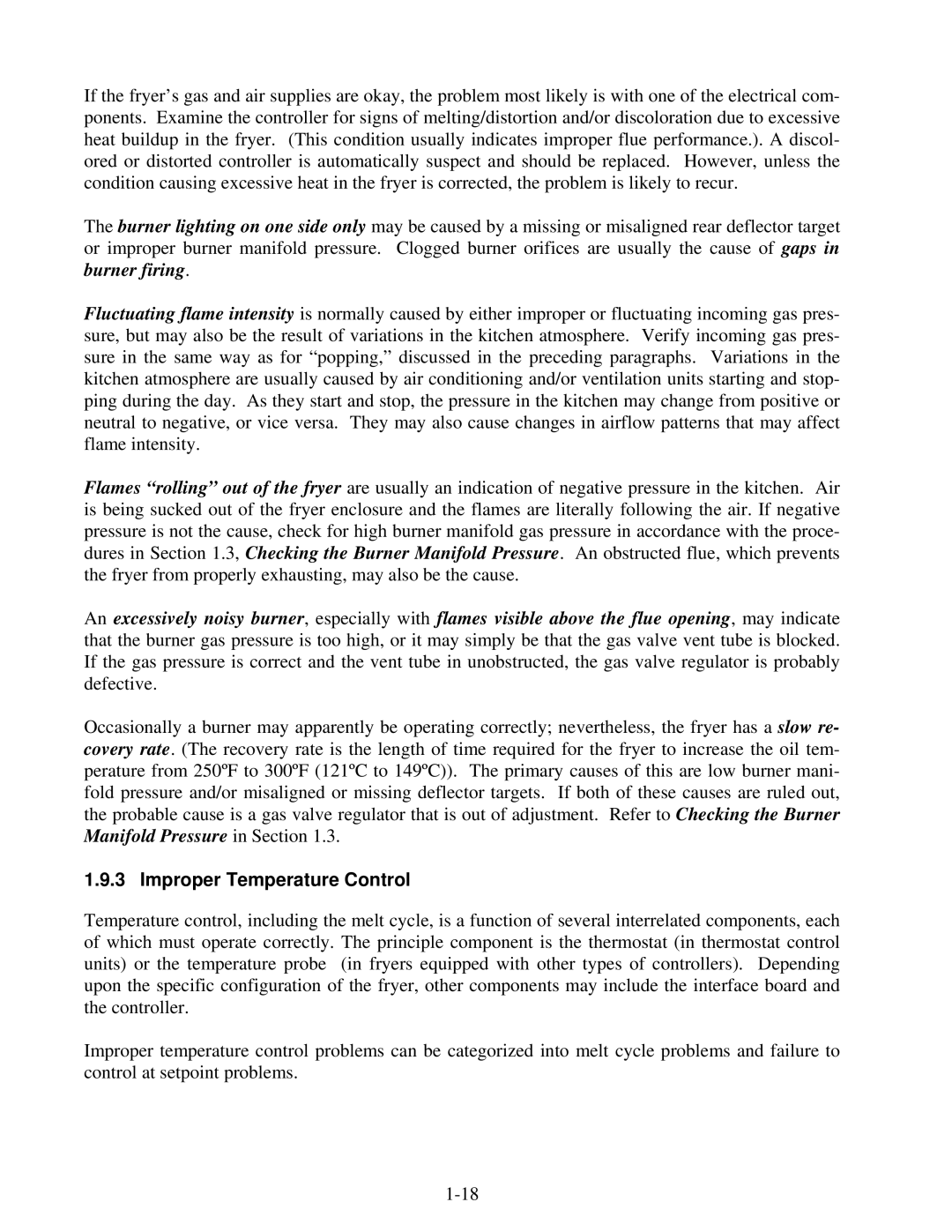If the fryer’s gas and air supplies are okay, the problem most likely is with one of the electrical com- ponents. Examine the controller for signs of melting/distortion and/or discoloration due to excessive heat buildup in the fryer. (This condition usually indicates improper flue performance.). A discol- ored or distorted controller is automatically suspect and should be replaced. However, unless the condition causing excessive heat in the fryer is corrected, the problem is likely to recur.
The burner lighting on one side only may be caused by a missing or misaligned rear deflector target or improper burner manifold pressure. Clogged burner orifices are usually the cause of gaps in burner firing.
Fluctuating flame intensity is normally caused by either improper or fluctuating incoming gas pres- sure, but may also be the result of variations in the kitchen atmosphere. Verify incoming gas pres- sure in the same way as for “popping,” discussed in the preceding paragraphs. Variations in the kitchen atmosphere are usually caused by air conditioning and/or ventilation units starting and stop- ping during the day. As they start and stop, the pressure in the kitchen may change from positive or neutral to negative, or vice versa. They may also cause changes in airflow patterns that may affect flame intensity.
Flames “rolling” out of the fryer are usually an indication of negative pressure in the kitchen. Air is being sucked out of the fryer enclosure and the flames are literally following the air. If negative pressure is not the cause, check for high burner manifold gas pressure in accordance with the proce- dures in Section 1.3, Checking the Burner Manifold Pressure. An obstructed flue, which prevents the fryer from properly exhausting, may also be the cause.
An excessively noisy burner, especially with flames visible above the flue opening, may indicate that the burner gas pressure is too high, or it may simply be that the gas valve vent tube is blocked. If the gas pressure is correct and the vent tube in unobstructed, the gas valve regulator is probably defective.
Occasionally a burner may apparently be operating correctly; nevertheless, the fryer has a slow re- covery rate. (The recovery rate is the length of time required for the fryer to increase the oil tem- perature from 250ºF to 300ºF (121ºC to 149ºC)). The primary causes of this are low burner mani- fold pressure and/or misaligned or missing deflector targets. If both of these causes are ruled out, the probable cause is a gas valve regulator that is out of adjustment. Refer to Checking the Burner Manifold Pressure in Section 1.3.
1.9.3 Improper Temperature Control
Temperature control, including the melt cycle, is a function of several interrelated components, each of which must operate correctly. The principle component is the thermostat (in thermostat control units) or the temperature probe (in fryers equipped with other types of controllers). Depending upon the specific configuration of the fryer, other components may include the interface board and the controller.
Improper temperature control problems can be categorized into melt cycle problems and failure to control at setpoint problems.
